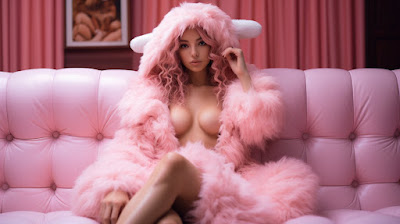hello,
I keep studying Fairy Tales because the subject enchants me - pun intended.
Like many kids, I grew up with sugar-coated Disney versions that have been systematically corrupted and modernized. It's like searching 'fairy tale p*rn' on Google.
So, I went deeper trying to understand what are Fairy Tales and how did we get where we are today.
Were fairy tales originally for kids?
No, many of the classic fairy tales were not originally intended for children. The original versions of these stories were often written for adult audiences and were not meant to be child-friendly or lighthearted tales.
They often contained darker themes such as violence, and moral lessons meant for older readers.
Fairy tales have a long history and were passed down through oral storytelling before being written down and collected by various authors. They served different purposes throughout history, including entertainment, cultural preservation, and moral instruction. Some of the earliest versions of fairy tales were told to adults around the fireplace, and they often contained elements that were not suitable for children.
 |
| MrSaxon004 |
It was only in the 19th century, during the Victorian era, that fairy tales started to be adapted and edited for children. Authors like the Brothers Grimm and Hans Christian Andersen played a significant role in popularizing fairy tales for children. They published collections that were somewhat more suitable for young readers, although still retaining some darker elements.
As fairy tales became more widely accepted as children's literature, subsequent generations of authors and editors continued to simplify and sugarcoat the stories to make them even more child-friendly.
Many of the fairy tales we know today have undergone significant changes and adaptations over the years to cater to a younger audience.
How many of these tales have an erotic tendency?
The original versions of classic fairy tales generally did not have an erotic tendency. Most of these stories were intended for general audiences and did not include explicit or erotic content. Instead, they often focused on moral lessons, cultural values, and elements of fantasy, magic, and adventure.
common elements often are:
- the journey of self-discovery,
- innate desire for change and growth,
- unconscious desires, fears, and conflicts
- transition from innocence to experience
Many, if not all of the above, can easily explore themes of sexuality and vulnerability.
 |
| MayorKingAI |
However, over time, various retellings, adaptations, and modern interpretations of fairy tales have explored more mature themes, including elements of romance and sensuality. Some authors have taken creative liberties to create adult-oriented versions of fairy tales with erotic undertones or explicit content. These adaptations are often targeted at adult readers who enjoy exploring familiar stories in a more mature and sensual context.
 |
| truyen hentaii |
It's essential to differentiate between the original, traditional fairy tales and contemporary adaptations that may incorporate erotic elements.
The classic versions of these fairy tales were primarily meant for general audiences, which may include children and did not contain explicit content. Any erotic tendencies in modern adaptations are a result of creative reinterpretations by individual authors or artists and are not inherent to the original tales.
 |
| bri_guy_ai |
Can we find an explanation as to why fairy tales gained erotic nuances?
is it a cultural need?
The emergence of fairy tales with erotic nuances is a result of various factors, including
- changes in cultural norms,
- the evolution of literature,
- the desire for reinterpretation and exploration of familiar stories in different contexts.
Here are some possible reasons why fairy tales have gained erotic elements:
Adult Interpretations: As literature evolves, authors and artists seek to reinterpret and adapt classic stories to cater to adult audiences. Fairy tales are well-known and beloved, making them a popular choice for creative reinterpretation with mature themes, including romance and sensuality.
 |
| Amazon |
Exploration of Taboos: Fairy tales often deal with themes such as love, desire, and transformation, which can intersect with adult themes and taboos. Authors may use these tales as a platform to explore deeper emotions, including romantic and erotic aspects that were not explicitly present in the original versions.
Appeal to Older Audiences: By adding erotic elements, authors can attract adult readers who enjoy exploring stories with more complex and sensual themes. It allows for a fresh perspective on the familiar tales, appealing to those seeking a more mature reading experience.
Artistic Freedom: Contemporary authors and artists have the creative freedom to reinterpret classic stories in various ways. Some may choose to incorporate erotic elements to challenge traditional narratives or to present a different view of familiar characters and relationships.
Cultural Shifts: As cultural attitudes toward sexuality and sensuality evolve, literature also reflects these changes. Modern audiences may be more open to exploring stories that address themes of desire and romance.
 |
| Óscar Bartolomé |
It's important to note that any erotic tendencies in contemporary adaptations are a result of creative reinterpretations and the freedom that authors and artists have to explore these themes in their work.


Nenhum comentário:
Postar um comentário